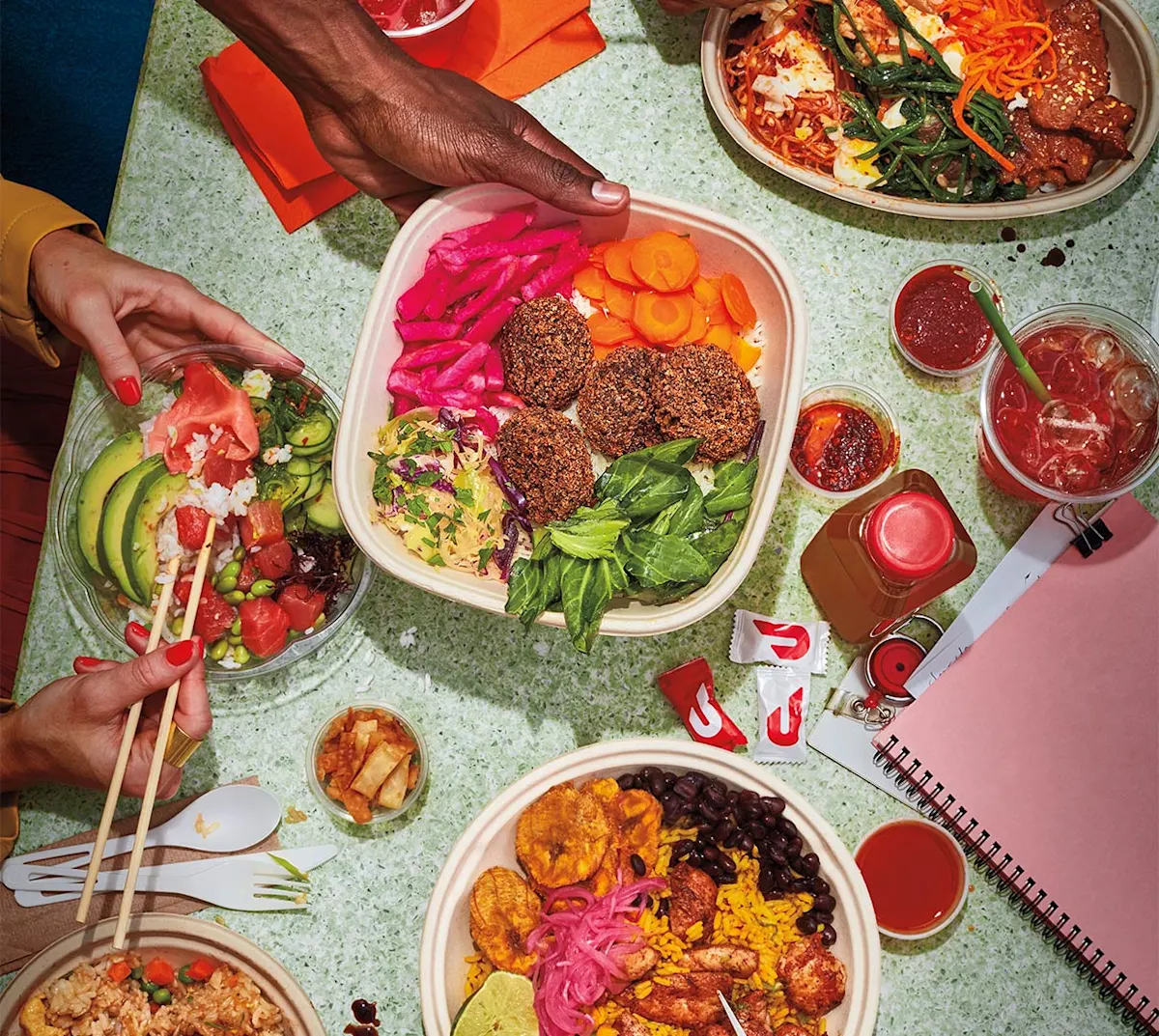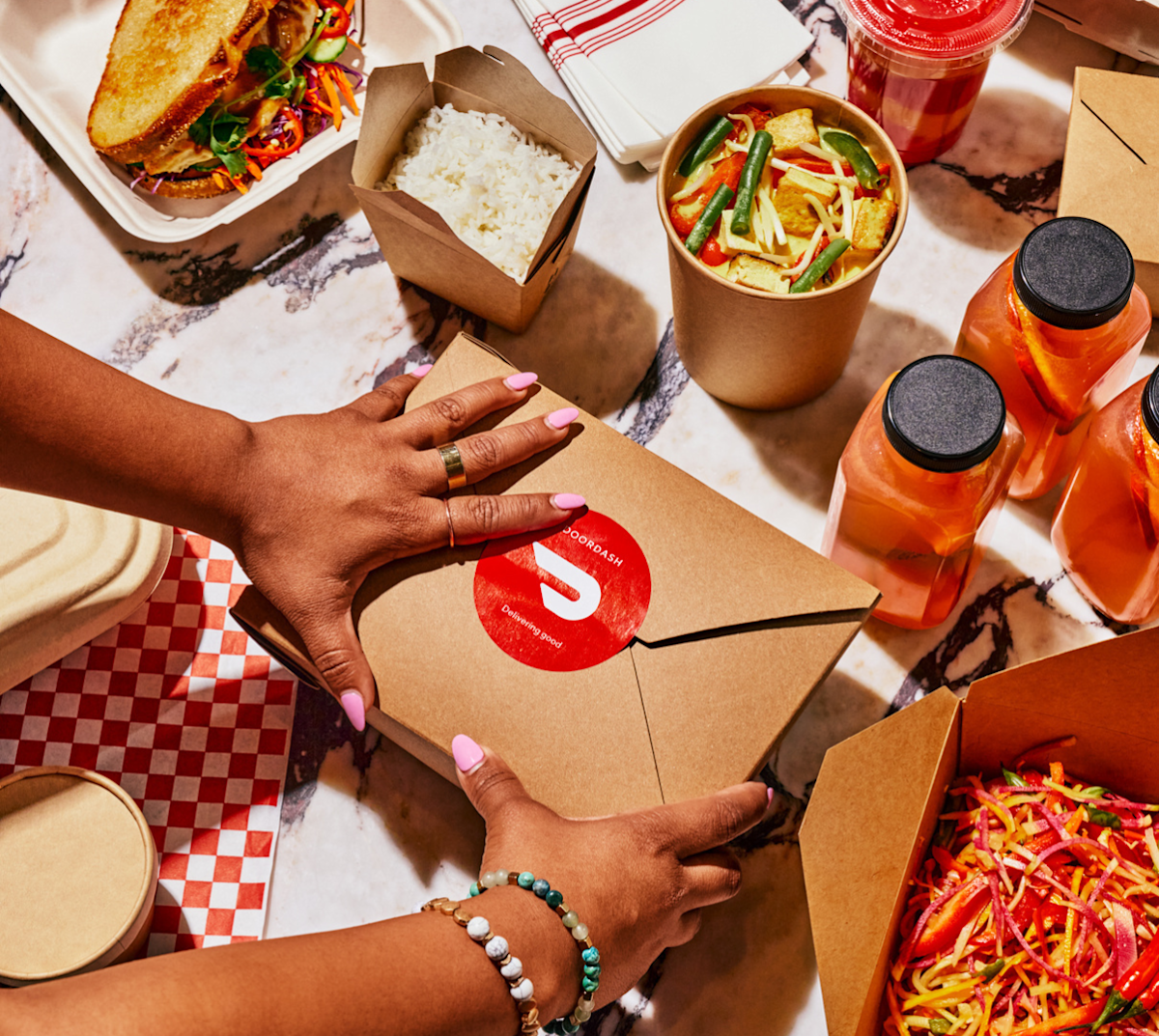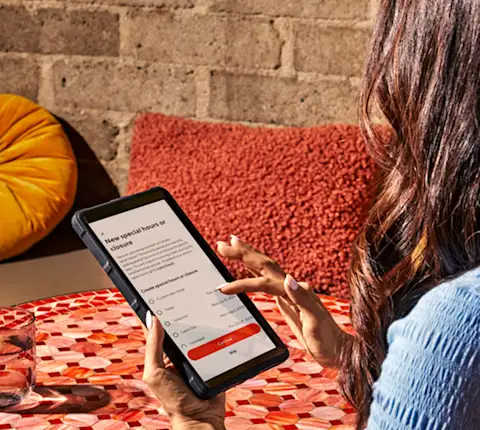Convenience has never mattered more to customers than it does now, and that's as true for the restaurant industry as it is for retail or any other sector. As a result, demand for fast food and fast casual dining — two of the most beloved and prolific types of eating establishments — remains as popular as ever. If you're looking to open a new restaurant venture, whether your first or your fifth, these models can offer significant value for you and your customers.
There's a difference between fast food and fast casual dining, and both have their benefits, opportunities, and challenges. Here's what you need to consider as you decide which one makes the most sense for your business
Ambiance and atmosphere
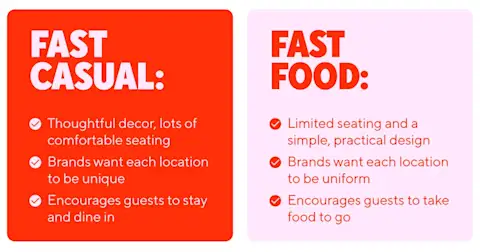
The difference between fast food and fast casual restaurants is evident from the moment you set foot in the door. A fast casual restaurant will likely have comfortable furniture, memorable decor, design-forward lighting fixtures, and perhaps large windows.
While fast casual may differ from a typical full service restaurant in that there's an overhead menu and a counter where you place your orders, there are plenty of seating options and, in some cases, a bar where you can order beverages from the drink menu.
In an interview with RestaurantSpaces, Mike Rypka, founder and CEO of fast casual restaurant brand Torchy's Tacos explains, "If you've been to one Torchy's, you've been to one Torchy's." He notes that every location has its own distinct character rather than feeling standardized and formulaic across their more than 100 stores in 14 states.
On the other hand, fast food restaurants favor continuity and familiarity across locations. Along with being uniform and practical in design, fast food restaurants tend to be smaller. Guests don't usually want to linger; they want to get on with their day. Limited square footage, combined with durable surfaces that are simple to wipe down, help guarantee that these restaurants prioritize function over form and maintain a regular customer turnover rate. They are genuinely the quickest of quick service restaurants.
It should be noted, however, that the unfavorable comparison to their fast casual peers has motivated some fast food chains to create more welcoming, sit-down environments — but the business model, including in-and-out dining facilitated by features like drive-thrus and self-service kiosks, remains much the same.
Food quality and pricing
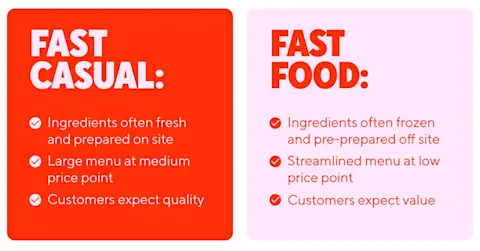
When you order a meal at a fast casual restaurant, expect to pay more than you would at a fast food restaurant but less than you would at a full service restaurant. They exist in a happy medium where costs are low but certainly not the lowest.
These slightly more premium prices are justified by the fact that fast casual restaurants tend to make their dishes from scratch with fresher ingredients than fast food joints. For instance, fast casual chain Shake Shack boasts on its website that the 100% Angus beef blend in its burgers is never frozen and is "humanely raised and grazed in the USA," directly appealing to a younger generation of consumers who care about sustainability and social responsibility as much as price.
Fast casual restaurants also typically allow for more customization. From sandwiches to burritos to salads to poke bowls, some feature assembly line-style service where customers select the ingredients they want to include in their orders.
The notion of "never frozen" beef patties is not applicable for a fast food classic like White Castle. In fact, the brand's original sliders — which famously cost less than a dollar — are so popular that boxes are sold nationwide in some convenience stores.
Fast food businesses can buy ingredients in bulk from suppliers and offer the all same fare made in all the same ways across all their locations. This simplified model, with pre-prepared food that in many cases only needs to be reheated, is what enables fast food restaurants to be so efficient in both their service and their costs
Customer experience
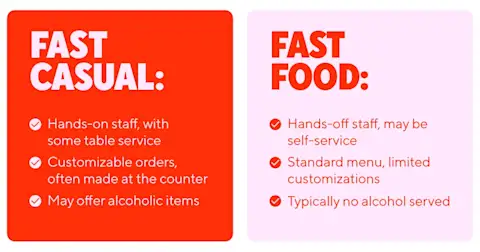
Based on the difference between fast casual and fast food restaurants in both ambience and quality, it's easy to deduce how their respective customer experiences would be distinct.
Both fast food and fast casual restaurants provide counter service. Some fast casual restaurants enhance this experience by offering customizations and preparing dishes at the counter while patrons watch. Other fast casual restaurants have customers place orders at the counter and pick up their meals at a designated spot, or even offer some service with runners delivering food to guests at their tables.
Because of how much they invest in interior design and decor, it's no surprise that fast casual restaurants generally encourage dining in. For example, beloved Bay Area chain Oren's Hummus offers happy hour at some of its locations during the week and even features a First Wednesday Wine Tasting every month for on-premise customers.
Fast food restaurants, on the other hand, focus primarily on grab-and-go dining. Self-service kiosks and drive-thrus keep interactions between staff and guests to a minimum. While some fast food establishments allow for customizations or modifications (e.g., extra pickles on a McDonald's Big Mac), most of these establishments are well-oiled — or perhaps well-greased — machines that emphasize consistency and convenience above all else. But what they lack in venue, they make up for in value. That's why you can purchase a dozen burgers from Krystal for $16.99. For those feeding a big group on a small budget, you can't argue with that.
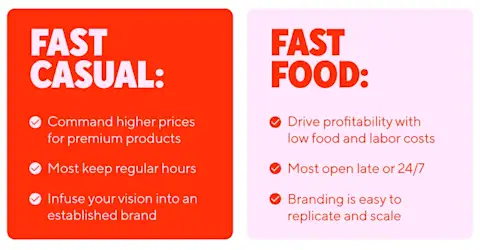
Whether a fast food or fast casual restaurant model is right for you depends on the target demographics you're looking to serve, the gaps in your local market you're hoping to fill, and the operational structure you want to run. Your culinary vision will also shape the decision — is your primary goal to drive a high volume of sales or to differentiate yourself with a more premium product?
For restaurateurs passionate about crafting great food for their guests, fast casual might seem like the way to go. You offer variety to clientele and appeal to consumers who are driven both by value and values — which is gaining prevalence among millennials and Gen Z. Your average check prices are higher compared to fast food. And you can shut your doors when the day is done rather than operating a chain of fast food joints that keep their lights on well after dark, if not 24/7.
But fast food has a lot of advantages too. You'll likely pay a lot less for labor, because the roles performed by staff require fewer specialized skills — and this also makes talent recruitment more affordable. You'll have fewer dining room expenses, because you're not furnishing your eatery with elaborate decor. And your inventory will likely cost less, since you can bulk-buy ingredients and bring in higher profit margins due to the easy prep.
Either way, both types of dining establishments remain popular nationwide. While fast casual restaurants may encourage dining in while fast food restaurants emphasize takeout, both have a high demand for delivery. By partnering with DoorDash, you can meet your customers wherever they are. Learn more about building a restaurant business plan that exceeds your guests' expectations and sets you up for long-term success.
